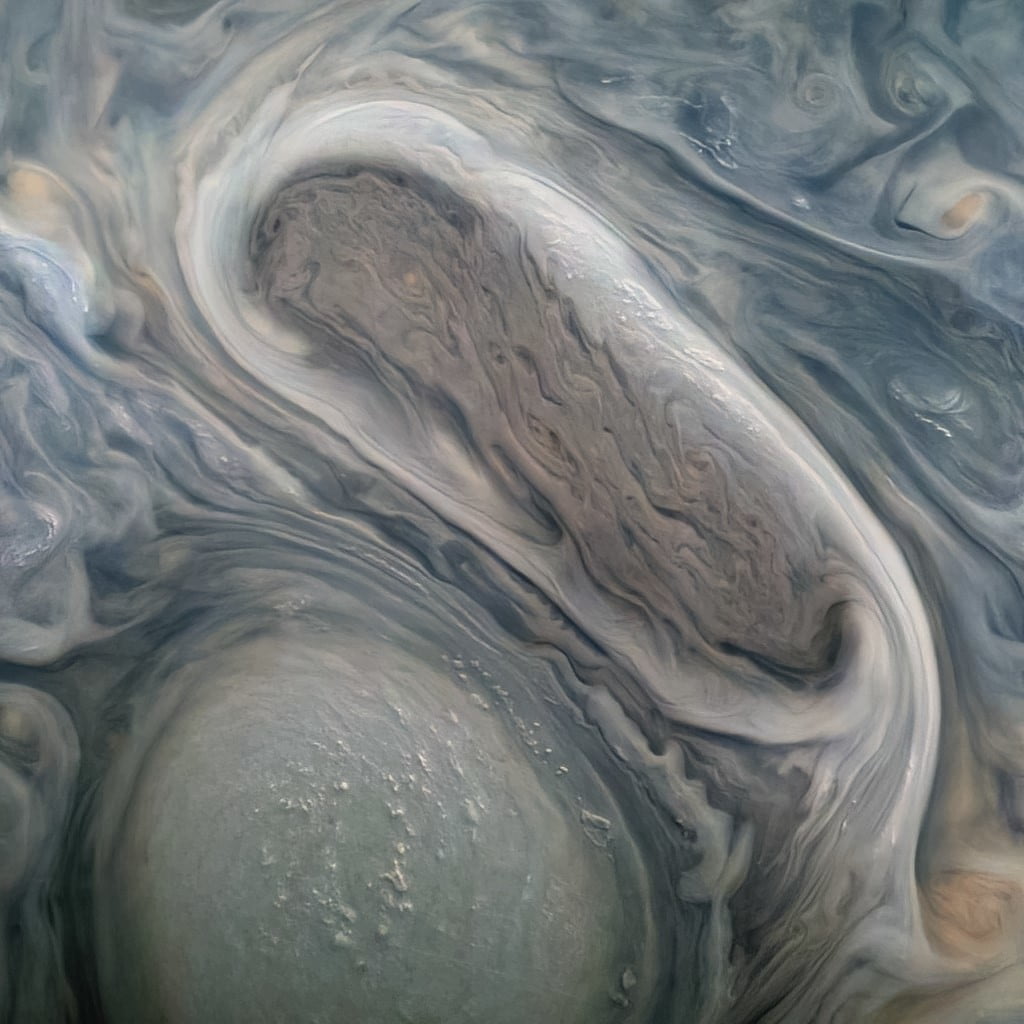NASA’s Juno spacecraft is famous for the beautiful images of the planet Jupiter it captures with its JunoCam instrument. But recently, the Juno scientists have released something different: An audio track that Juno captured while passing by Jupiter’s moon Ganymede.
The short audio track captures the weird and wonderful sounds of space exploration, generated from data gathered by Juno’s Waves instrument. This measures the magnetic field around Jupiter, called its magnetosphere, to understand how it interacts with gases in the atmosphere. It collected data on the electric and magnetic waves during its flyby of Ganymede which were then converted into the audio range.
“This soundtrack is just wild enough to make you feel as if you were riding along as Juno sails past Ganymede for the first time in more than two decades,” said Juno’s principal investigator, Scott Bolton, in a statement. “If you listen closely, you can hear the abrupt change to higher frequencies around the midpoint of the recording, which represents entry into a different region in Ganymede’s magnetosphere.”
The data was collected during Juno’s closest flyby of Ganymede in June 2021, when it passed within 645 miles of the huge moon. Ganymede is covered largely in water ice and is the largest moon in the solar system as well as being the only moon with a magnetic field. It is thought to have an underground saltwater ocean beneath its icy crust, which has made it a target of interest for those looking for places in the solar system where life could flourish outside of Earth.
The researchers are still working on the Waves data from the Ganymede flyby and will be performing analyses and modeling to learn more about the electric and magnetic fields around the moon and planet. “It is possible the change in the frequency shortly after closest approach is due to passing from the nightside to the dayside of Ganymede,” said William Kurth of the University of Iowa in Iowa City, lead co-investigator for the Waves investigation.
Editors’ Recommendations

